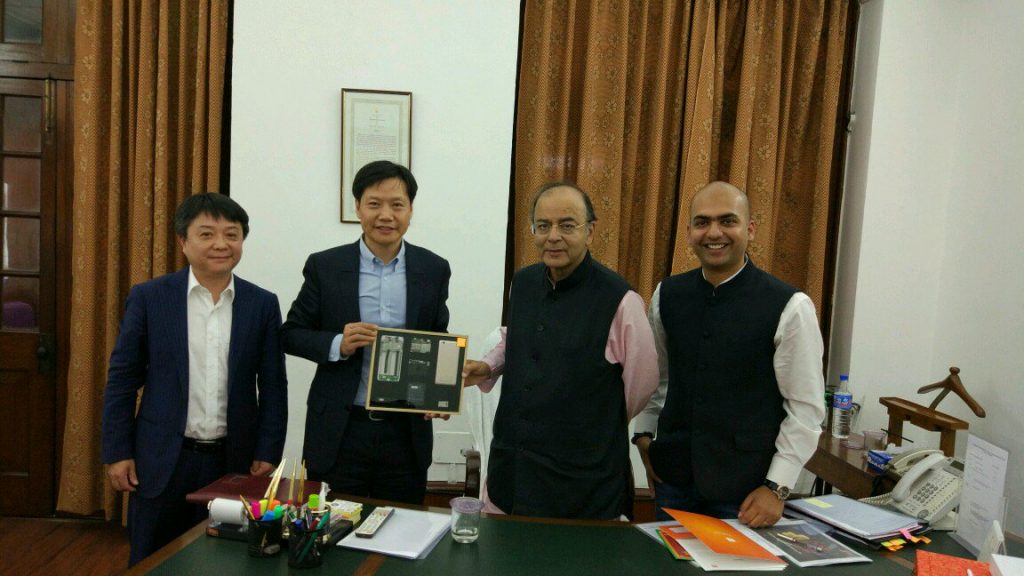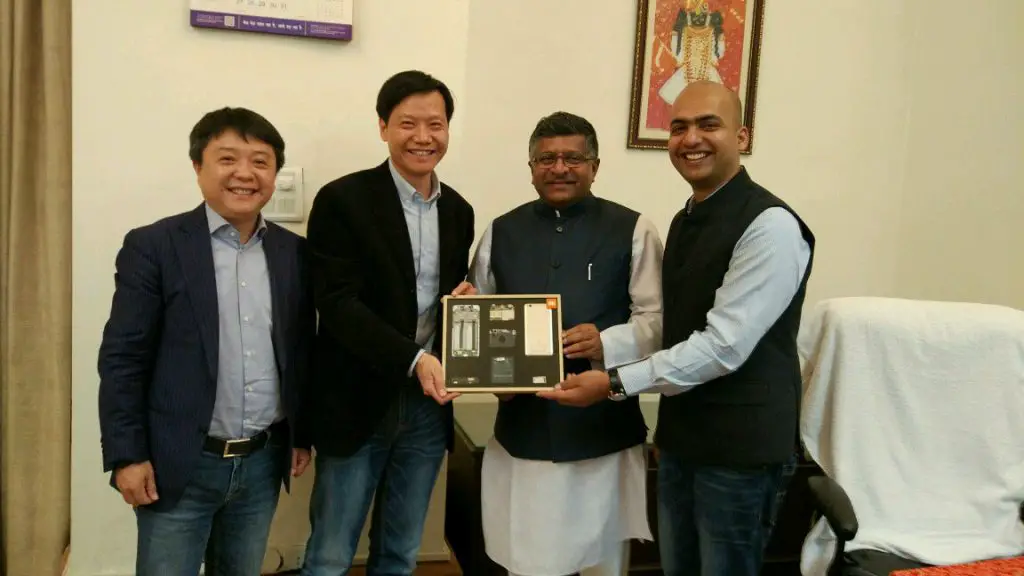Chinese technology company Xiaomi’s founder and CEO Lei Jun met Prime Minister Narendra Modi on Tuesday and said the company was committed to creating more jobs in India.
The chairman of the Chinese tech giant told PM Modi how smartphones are changing the lives of Indian consumers, said a statement from Xiaomi.
They discussed Xiaomi India’s manufacturing and growth plans, and Lei reaffirmed his commitment to create more jobs in India.
Lei presented PM Modi a Made-In-India Redmi 4A smartphone with all its components displayed in a glass box. He also met Union Finance Minister Arun Jaitley and Information Technology Minister Ravi Shankar Prasad.
On Monday, Lei said India was one of the important markets for the company and it aims to create 20,000 jobs in the next three years.
As a part of his visit, which started on Sunday, Lei spoke at the Economic Times Global Business Summit 2017, and said the company has made major strides in a very short time.
Lei also spoke about China’s “Internet Plus” policy which Chinese Premier Li Keqiang started in 2015.
“Internet Plus action plan is a new form of economic plan where internet is integrated with traditional industries encouraging to the spirit of excellence in these industries and drive economic growth,” he said.
Xiaomi entered India in July 2014. Last year, the company logged $1 billion in revenue in the country.
After entering India, the company opened its first plant in August 2015 and by March 2016, over 75 percent of its phones were being manufactured in India.
Riding on its success, last week Xiaomi announced its second manufacturing unit in partnership with Taiwanese electronics major Foxconn in Andhra Pradesh.
The plant has also helped create employment for more than 5,000 people from over 100 surrounding villages. More than 90 percent of the workforce employed are women.
IANS

